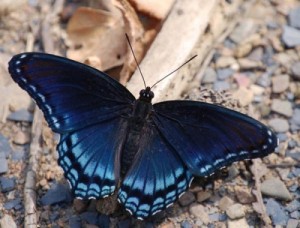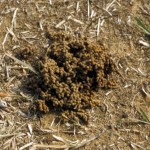 Besides pollinating flowers (butterflies, honeybees), fruits and vegetables, beneficial organisms play other important roles in our ecology.
Besides pollinating flowers (butterflies, honeybees), fruits and vegetables, beneficial organisms play other important roles in our ecology.
They produce food or other useful products (honey, beeswax), improve the landscape environment (ants and earthworms help decomposition, aerate the soil and reduce compaction), and control pest populations through biological control. By allowing beneficial organisms to work for us, we will reduce the need for pesticides that may harm the environment if misused or overused.
Pollinators
Natural Enemies
Organisms that help control the pest populations in the landscape and protect the balance of nature are called natural enemies. Biological control is the practice of manipulating selected natural enemies in an attempt to control pest populations.
- Predators hunt and kill other organisms for food.
- Parasites/parasitoids live on or within pests, and eventually kill them. Parasites do not kill their hosts, whereas parasitoids eventually kill their hosts.
- Parasitic wasps
- Parasitic flies
- Parasitic nematodes
- Pathogens cause disease in their hosts. Insecticide products containing pathogens must be registered by the Environmental Protection Agency (EPA).
- Microbial insecticides such as Bacillus thuringiensis (B.t.)
- Thelohania, a disease of red imported fire ants
Other Beneficial Organisms
-
Decomposers/Recyclers
 Earthworms
Earthworms
Earthworms are considered beneficial organisms. Their tunnelling aerates the soil and reduces compaction. However, in the upper coast area of Texas, earthworms occasionally become so numerous as to make the turf sponge-like. They deposit large numbers of castings or fecal pellets on the turf surface.- Termites, one of the few organisms in our environment that can digest and recycle cellulose, the material making up plant material like tree trunks
-
Competitors
Competitors challenge pests for food sources; however, they are often overlooked as beneficial because many are pests themselves.
(University of Florida, IFAS Publication #ENY-276)
Competitors can be beneficial, however, in instances where they compete with a non-damaging stage of a pest species. For example, dung beetles in the genera Onthophagus and Aphodius break up cow pats in pastures as they prepare dung to feed their larvae. This action speeds the drying of dung and makes it less suitable for the development of the larval stages of horn flies, face flies, and other pest flies. Some non-pest flies also develop in pasture dung and compete with pest species for the resources it provides. Despite these and a few other examples, the use of competitors in pest management is not common.
